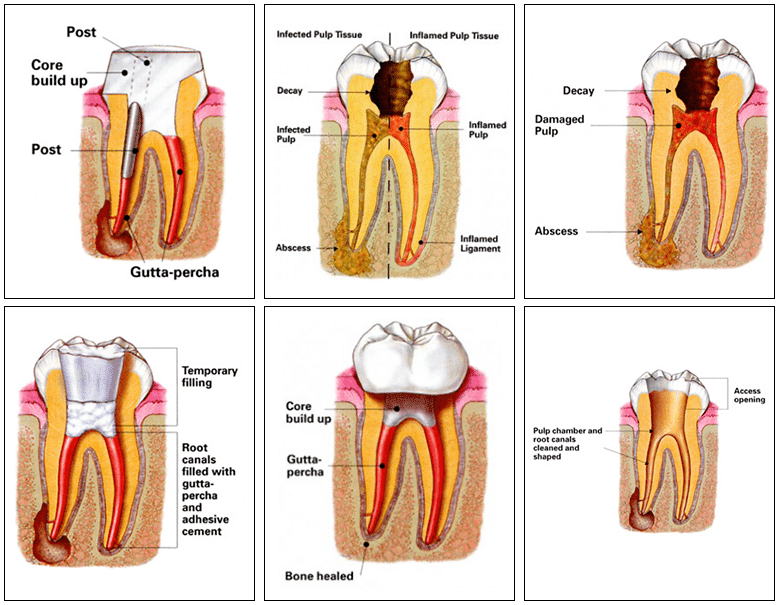What is Root Canal Therapy
Root Canal Therapy, or endodontic treatment, is usually reserved for cases that have severe tooth infections that did not get addressed early on. A cavity that does not get a tooth filling will grow and cause deeper infection and tooth decay. This prompts the need for a root canal.
A root canal removes the infected tissue inside your tooth which eliminates your infection, relieves your discomfort, and protects your natural tooth structure.
Avoiding Root Canal Therapy
It is our goal here at Moore Family Dentistry to help you avoid root canal therapy. We do this through routine cleanings and checkups. When you visit Moore Family Dentistry every six months, we’ll be able to detect issues such as tooth decay and gum disease in their earliest stages. This allows you to be productive and treat decay with procedures such as a filling, keeping it from progressing into your nerve and resulting in the need for a root canal.
How does endodontic treatment save the tooth?
Dr. Moore removes the inflamed or infected pulp, carefully cleans and shapes the inside of the tooth, then fills and seals the space. Afterward, you will return to your dentist, who will place a crown or other restoration on the tooth to protect and restore it to full function. After restoration, the tooth continues to function like any other tooth.
Will I feel pain during or after the procedure?
Many root canals are performed to relieve the pain of toothaches caused by pulp inflammation or infection. With modern techniques and anesthetics, most patients report that they are comfortable during the procedure.
For the first few days after treatment, your tooth may feel sensitive, especially if there was pain or infection before the procedure. This discomfort can be relieved with over-the-counter or prescription medications. Follow Dr. Moore’s instructions carefully.
Your tooth may continue to feel slightly different from your other teeth for some time after your endodontic treatment is completed. However, if you have severe pain or pressure that lasts more than a few days, call your endodontist.

What is the endodontic procedure?
Endodontic treatment can often be performed in one or two visits and involves the following steps:
- Dr. Moore examines and x-rays the tooth then administers a local anesthetic. After the tooth is numb, the endodontist places a small protective sheet called a “dental dam” over the area to isolate the tooth and keep it clean and free of saliva during the procedure.
- Dr. Moore makes an opening in the crown of the tooth. Very small instruments are used to clean the pulp from the pulp chamber and root canals and to shape the space for filling.
- After space is cleaned and shaped, the endodontist fills the root canals with a biocompatible material, usually a rubber-like material called “gutta-percha.” The gutta-percha is placed with an adhesive cement to ensure complete sealing of the root canals. In most cases, a temporary filling is placed to close the opening. The temporary filling will be removed by your dentist before the tooth is restored.
- After the final visit with Dr. Moore, you must return to your dentist to have a crown or other restoration placed on the tooth to protect and restore it to full function.
If the tooth lacks sufficient structure to hold the restoration in place, Dr. Moore may place a post inside the tooth. Ask your dentist or endodontist for more details about the specific restoration planned for your tooth.
If you have an infected tooth, please contact Moore Family Dentistry today to find out whether a root canal is right for you. Dr. Adam Moore serves patients in Garner and Cary, North Carolina.
